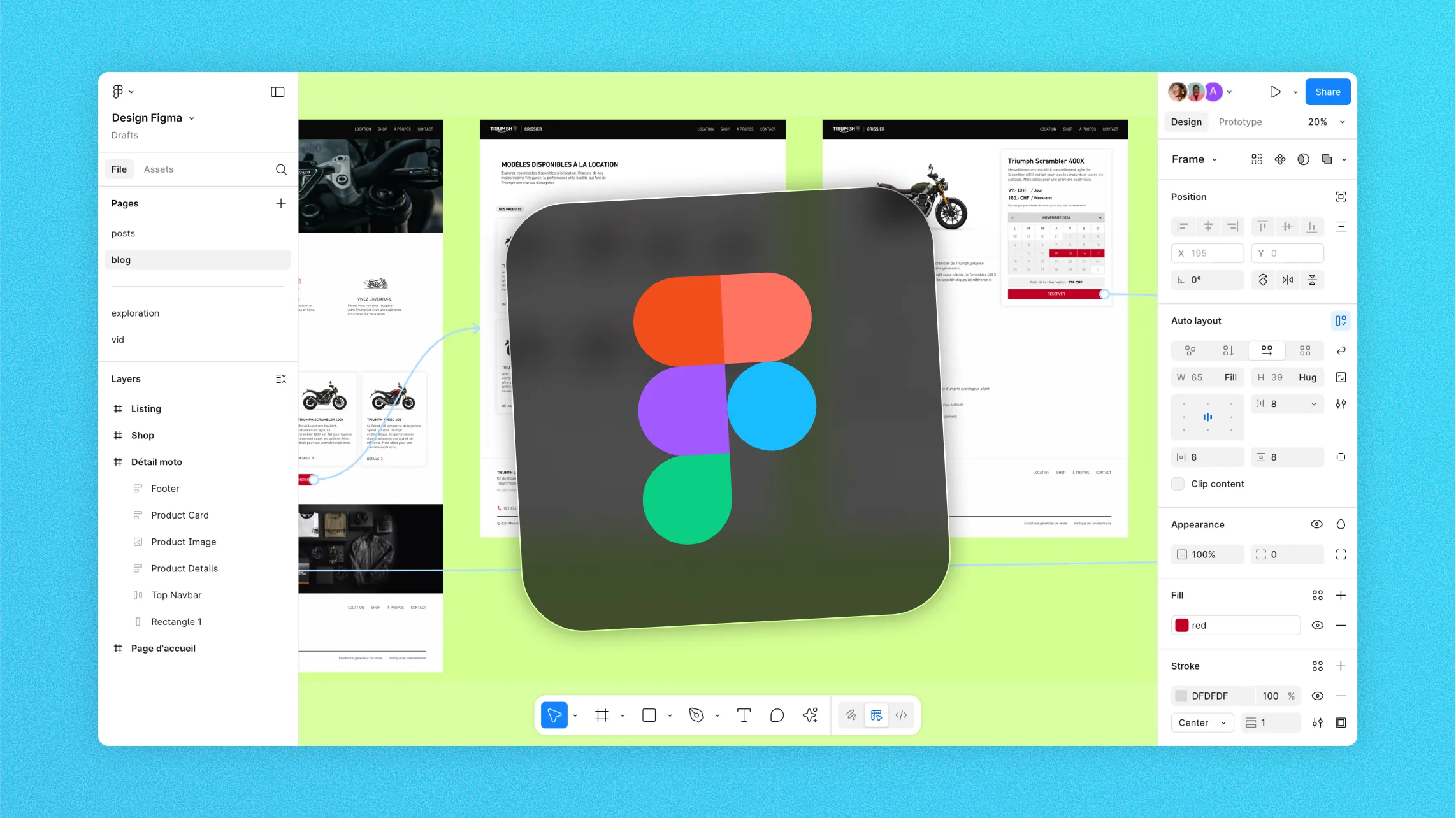
Figma - The Essential Tool in Web Design and Development

When creating a website or web application, moving from an idea to a finished product requires a crucial step: design. This phase defines page structure, element placement, colors, and user experience that guides navigation.
Today, one tool has become essential for web designers and developers alike: Figma. This fast, collaborative, and web-based application allows teams to easily create and prototype interfaces. Let's explore why Figma is a must-have and how it continues to innovate in 2025.
What is Figma?
Figma is an online design platform that simplifies building user interfaces for websites and apps. Think of it like Google Docs but instead of text, you manipulate buttons, images, and user interactions. Accessible via any browser without installation, Figma enables multiple collaborators to work on the same project in real time, making teamwork seamless, especially for remote teams¹.
Why Figma Became the Industry Standard
Previously, tools like Sketch and Adobe XD were popular but limited: Sketch was Mac-only, and Adobe XD lacked real-time collaboration. Figma revolutionized design by offering:
- 100% cloud-based access from any device
- Real-time collaboration between designers, developers, and stakeholders
- Easy sharing via simple links, eliminating large file transfers
- Cross-platform support including Windows, Mac, Linux, and tablets
These features transformed workflows and made Figma the preferred tool for businesses of all sizes².
Figma's AI Features and New Tools
At its 2024 and 2025 Config events, Figma introduced powerful new tools enhanced by **artificial intelligence (AI)**³:
- Figma Sites: Build websites with no coding required
- Figma Buzz: Create engaging social media content easily
- Figma Make: Generate functional prototypes automatically using AI
These expansions position Figma as a multi-purpose platform competing with Canva and Framer⁵. While some worry about the impact on traditional design features, AI primarily frees designers to focus on creativity and value-driven work. The role of AI is redefining how web projects are designed and delivered.
Penpot: The Open-Source Alternative
For teams seeking more control and ownership, Penpot offers an open-source alternative⁶. Similar to Figma, Penpot is cloud-based and supports self-hosting, giving full control over design files. It uses open web standards like SVG and CSS, easing collaboration with developers. Although Penpot is not yet as mature as Figma, its open philosophy makes it a promising option for many organizations.
Summary
- Figma is the top web design tool in 2025 thanks to real-time collaboration, cross-platform accessibility, and AI innovations.
- AI automates repetitive tasks, enabling designers to focus on creative work.
- Figma’s new tools expand into no-code websites and social media content creation.
- Penpot offers an open-source solution with greater file control and web standards support.
- DevFactory leverages these tools to deliver flexible, modern, and collaborative web solutions tailored to client needs.
Sources
¹ figma.com
² wsj.com – How Figma Democratized Design
³ Figma Config 2025 Recap
⁵ The Verge – Figma AI Tools Announcement
⁶ Penpot vs Figma